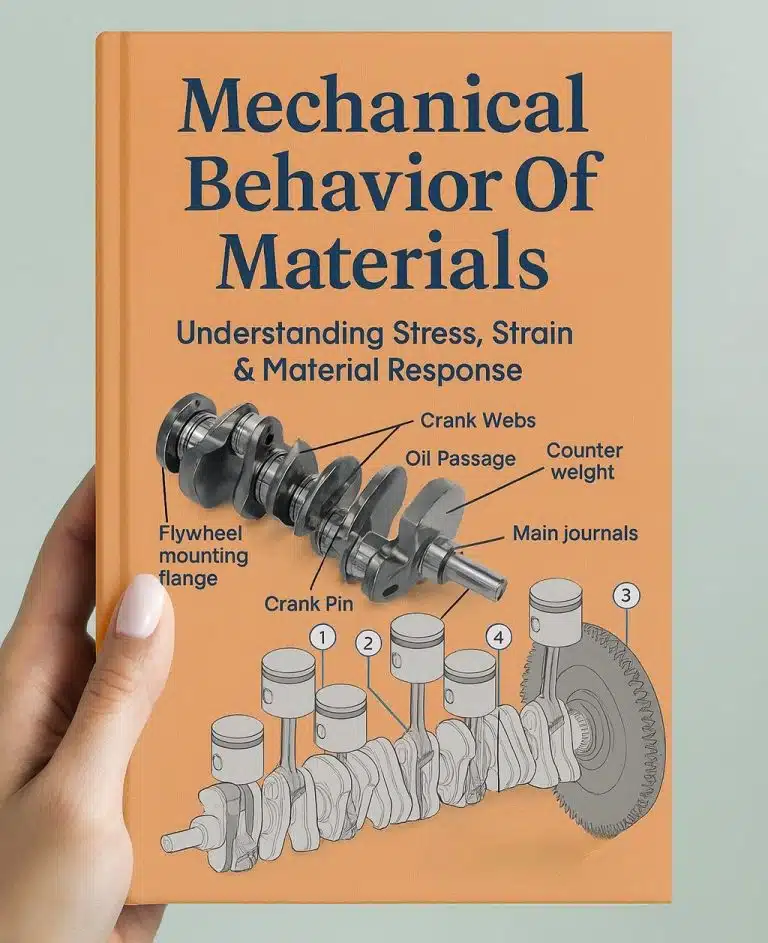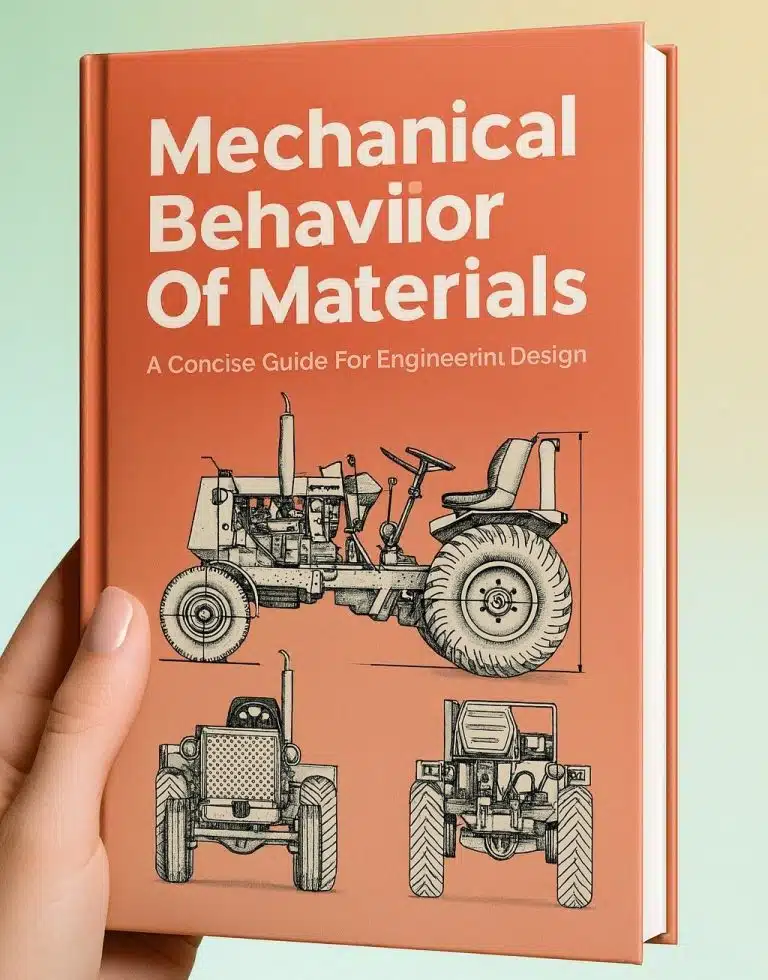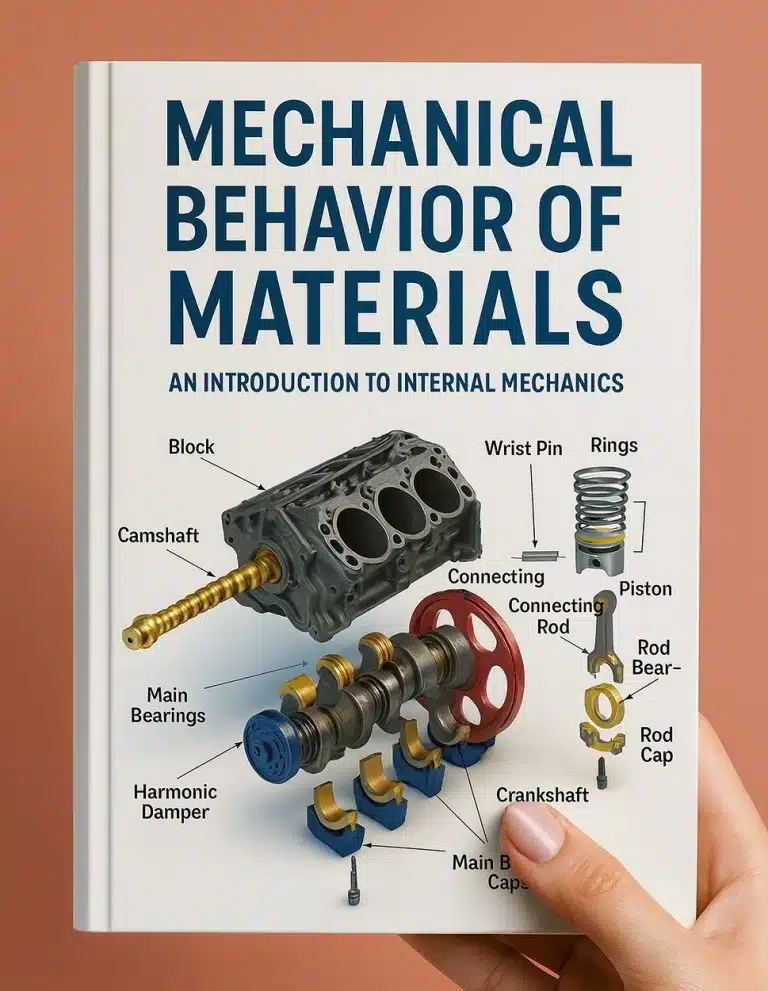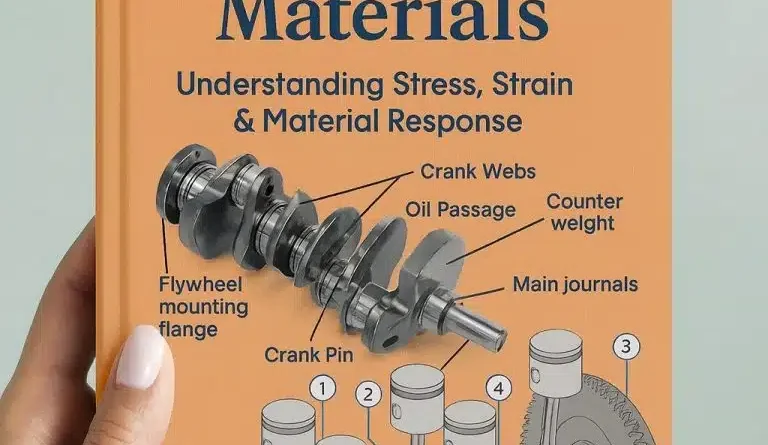Mechanical Behavior of Materials
Ultimate SEO-Optimized Summary: Mechanical Behavior of Materials (4th Edition)
Master the Science of Material Strength and Failure

The Mechanical Behavior of Materials (4th Edition), most famously authored by Norman E. Dowling, is the definitive, application-oriented textbook for upper-level undergraduate and first-year graduate students in Mechanical Engineering and Materials Science. This essential guide provides a complete, engineering-focused treatment of how structural materials deform, fracture, and fatigue under various loads and environmental conditions.
The book emphasizes practical engineering methods for testing materials, interpreting their properties, and confidently predicting their strength and service life in real-world applications such as machines, vehicles, and structures. It’s the must-have reference for understanding how to design for safety, reliability, and economy.
What the Book Covers: Core Content and Key Concepts
The 4th Edition adopts a unified, mechanics-materials approach, moving logically from fundamental concepts to advanced failure prediction models.
- Foundation of Mechanics: Thorough coverage of stress, strain, elasticity, and viscoelasticity, forming the bedrock of mechanical analysis.
- Plasticity and Deformation: Detailed examination of yielding, plastic deformation behavior, and the use of yield criteria (Tresca and Von Mises) to solve engineering problems.
- Fracture Mechanics: A modern and detailed treatment of fracture of cracked members, stress intensity factors, and fracture toughness, providing the tools to prevent catastrophic failure.
- Fatigue Analysis: Extensive coverage of fatigue (the most common cause of structural failure) from both stress-based (S-N) and modern strain-based (E-N) approaches, including life prediction for notched members and irregular loading.
- Time-Dependent Behavior: Dedicated chapters on creep and damping, crucial for designing components that operate at high temperatures over long service periods.
- Testing and Properties: An emphasis on the testing of structural materials to accurately obtain properties like yield strength and fatigue limits, ensuring intelligent use of materials data.
Why This Book is Essential: Features and Benefits

The 4th Edition has been meticulously updated to reflect the needs of modern engineering designers and researchers, making it a powerful resource:
Top Features of the 4th Edition
- Engineering Methods Focus: Unlike purely theoretical texts, this edition prioritizes analytical and predictive methods that are directly applicable to preventing structural failure in design.
- Unified Approach: Presents a clear connection between material properties and the mechanics of deformation and failure.
- Comprehensive Failure Modes: Provides an authoritative treatment of the three major failure modes: Deformation, Fracture, and Fatigue, ensuring engineers can design for material longevity.
- Ready-to-Use Format: Ideal for both students who have completed an elementary mechanics of materials course and practicing engineers needing a reliable, well-organized reference source.
- Newer Developments: The text is often revised to incorporate the latest developments in areas like biomaterials, electronic materials, and computational modeling (depending on the specific author’s focus).
How Engineers and Students Benefit

- Design Reliability: Learn to efficiently use materials while ensuring structural failure will not occur, leading to safer and more reliable products and structures.
- Troubleshooting & Failure Analysis: Acquire the knowledge to perform accurate failure analysis and troubleshoot component defects in the field.
- Quantifiable Prediction: Develop skills to quantify material resistance to failure using properties like fracture toughness and stress-life curves.
- Career Advancement: A strong command of the topics in this book is fundamental for roles in aerospace, automotive, manufacturing, and civil engineering.
Your Gateway to Mastery: Get the Book FREE!
Understanding the mechanical behavior of materials is fundamental to innovation and safety in all engineering disciplines. Don’t let your knowledge base fall behind!
Secure Your Free Copy of Mechanical Behavior of Materials, 4th Edition Today!
Gain a competitive edge by downloading your copy of this indispensable textbook completely FREE from our online library at LightYourBrain.com. Start mastering the principles of deformation, fracture, and fatigue now!
Highly Recommended Companion Books
To build a well-rounded expertise in materials and design, we suggest pairing this text with the following resources, also available on our site:
- Fundamentals of Materials Science and Engineering: For a deeper dive into material microstructure and processing.
- Engineering Design and Analysis: To integrate material behavior principles into the overall design process.
- Advanced Topics in Fatigue and Creep: For specialized study beyond introductory material.



